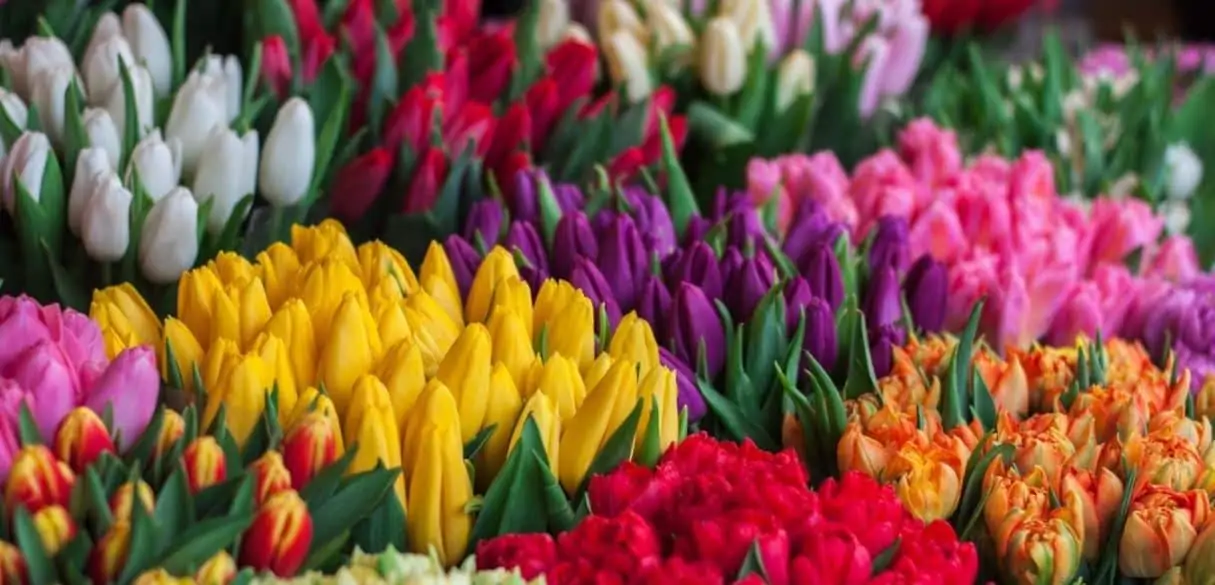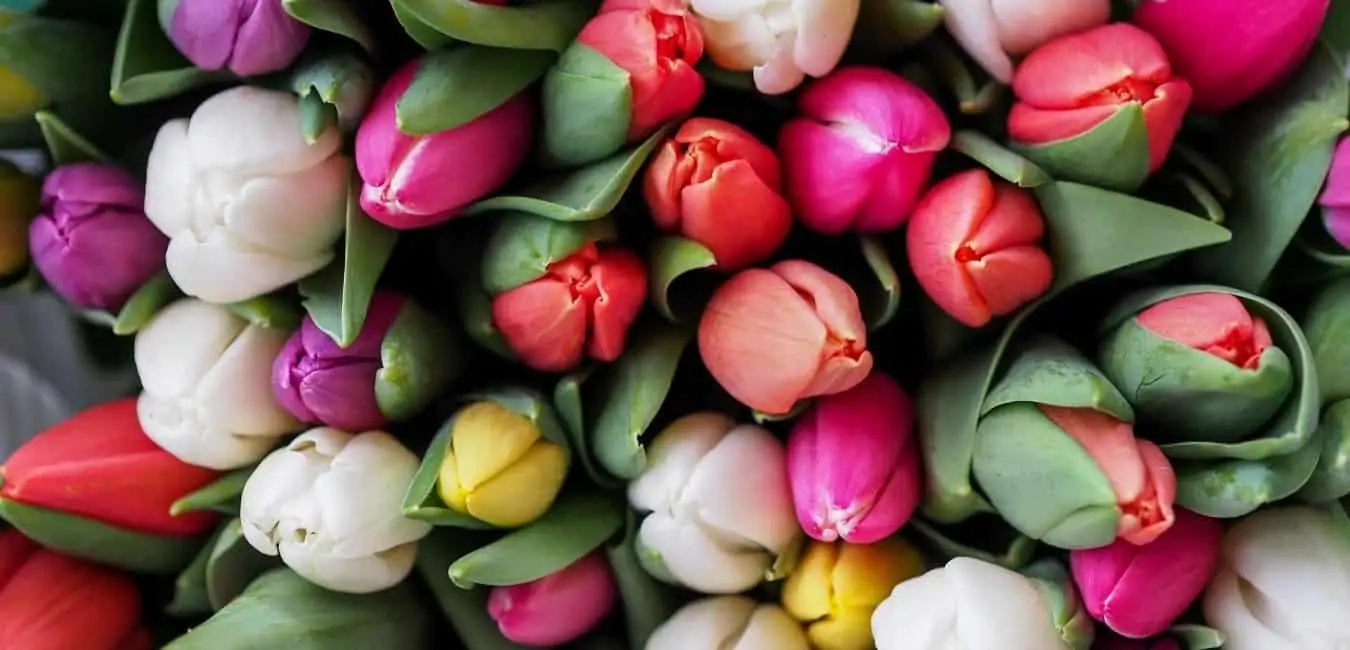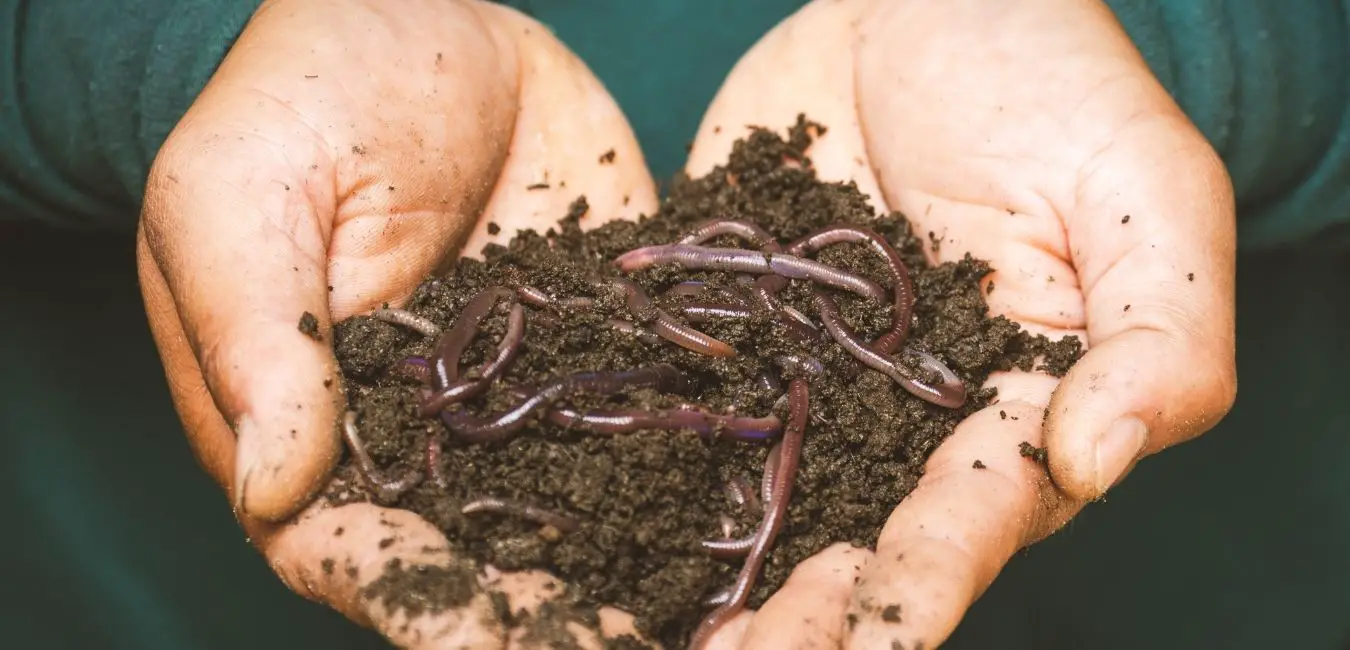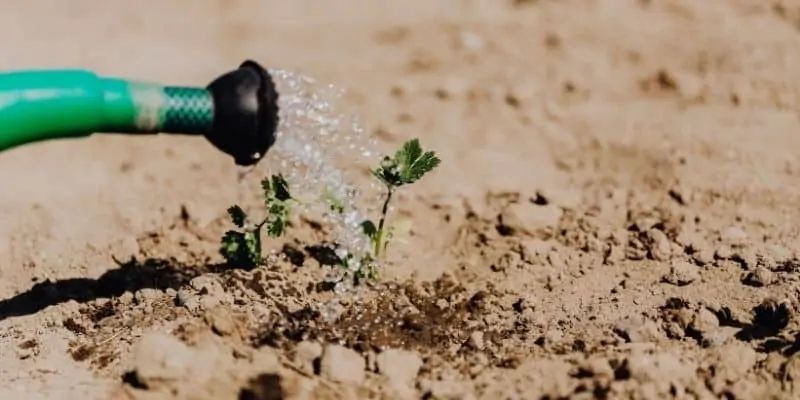Sometimes growing Tulips can be tricky especially when you don’t know what’s exactly going on with your plant. You’ve done everything you know to get the best bloom. Maybe you succeed or maybe not but you found some premature yellow leaves. Why is My Tulips Turning Yellow? this should be the first question to come in the mind. If the bloom was good so do the plant health then why is this happening? There are only two possible answers to your query. Either your Tulips are old and mature or they are not in good health as you presume.
In both situations, you are the prime suspect for the outcome. If you have harvested the Tulips then good for you. The growing season is now over for those beautiful plants. Else if there is still some time left to bloom. Then you should worry about the situation. Hurry up and find the cause before the Tulip plant gets irreversible damage.

Check out my previous post: How to Remove Wilted Tulip after Blooming?
Is Yellowing Normal for Tulip Leaves?
Tulip leaves turn yellow at the end of the growing season. Once the flowering is over, the foliage starts turning yellow and then die to turn brown. Aging is natural with Tulips just like any other plant. The leaves turn yellow due to natural aging. It is not a problem for the Tulip plants.
Although if the plant turns yellow before blooming then it is an unnatural condition. Normally Tulips don’t turn yellow prematurely unless there is something serious to worry about. Either the environment or the Soil condition is not favorable for the Tulip Bulbs. Therefore keep an eye on the Tulip leaves turning yellow or pale green. The lighting of color with any other sign can indicate disease or infestation.
Overall, it is your duty as a gardener to save your plants. You should act smart as soon as you find any sign of these problems. Sometimes the early response can save the Tulip plant from serious damage. Otherwise, your Tulips won’t bloom this year without good foliage growth.
Can Overwatering cause yellowing of Tulip Leaves?
Yes, definitely Overwatering can cause the yellowing of leaves. Tulips don’t like much water. It requires well-drained sandy mineral-rich soil. It can survive in plain nutrition deficit soil but not in soggy spots. Rootrot and Bulb rot in Tulips are common in soggy waterlogged conditions.
Excess water can easily damage the tulip bulbs causing nutrient deficiency to its foliage. In absence of sufficient nutrition, the leaves won’t develop chlorophyll. This in turn makes the leaves yellow and pale. The discoloration of leaves due to lack of chlorophyll is called chlorosis.
Overwatering is a common source of Chlorosis in many plants including Tulips.
12 Reason Why Tulip Leaves Turn Yellow
- Infected Bulbs
- Improper Vernalization or Wintering
- Early Forcing or Thawing
- Improper Drainage
- Overwatering
- Underwatering or Dehydration
- Alkaline Soil (high soil Ph)
- Inadequate Sunlight
- Deficiency of Nutrition
- Overheating
- Pest and Diseases
- Shallow Planting

These are the 12 possible reasons for Tulips turning Yellow prematurely. The problem may occur due to any single one of these. Sometimes multiple reasons are working together to make the situation worse. You have to check out each one and find the actual cause of the problem. Ignoring these reasons can lead to very poor, little or no bloom at all.
Also read: How to Grow Tulips in a Greenhouse?
Why are My Potted Tulips Turning yellow?
Potted tulips tend to turn yellow more quickly than garden plants. They have less room for root growth and a lot less nutrition compared to open gardens. Other than these problems waterlogging is also common with container gardening. A sudden drop or increase in ph due to the application of fertilizers can worsen the situation. Finally, the sun can add to the deteriorating condition by frequent roasting of the soil in the pots. The low amount of soil is unable to hold the balance of temperature. They can become too hot in the daytime and cold at night. This can lead to frequent cooling and hawing of the bulbs. Which eventually results in yellow foliage.
The situation may be different but the problem is the same for both garden and potted Tulips. If the leaves are turning yellow then you should blame one or many of these 12 reasons.
Infected Bulbs
The first and most common reason for yellow Tulip leaves is the Infected bulb. If you have bought these bulbs from a Gardener then there is a fair chance of pathogens on the bulbs. Commercial cultivators always treat their tulips and other flowering bulbs after sorting and before planting with chemical fungicide or pesticides.
Those bulbs are less likely to be infected. Still, chemically treated old bulbs can develop pathogens due to excess moisture and low ventilation in the storage.
There is no way to be sure unless you know it is free from diseases. Instead, you should treat the bulbs with fungicide before plantation. The best option is to grow these bulbs in heat-treated pots and baked soil. Though this is not very convenient for home gardeners still you must try as much as you can.
Improper Vernalization or Wintering
Vernalisation is the process of putting bulbs in artificial winter conditions. This is essential especially to wake the bulbs from dormancy. Every commercial flower cultivator uses this technique to grow Tulips. Artificial wintering is helpful to get bloom out of the spring season.
It is possible that if you buy a tulip plant then it may have been developed from vernalized bulbs. It is a great technique to obtain blooms in Tulips any time of the year. But if the temperature or timing is not correct for Vernalisation the plant may wilt and turn yellow before blooming.
The blub should be vernalized or cooled at 40 to 45 degrees Fahrenheit for a minimum of 6 weeks. If you increase the temperature above 55 degrees or the timing below 5 weeks then it will not bloom.
Early Forcing or Thawing
Once cooling or vernalization is completed for 6 weeks. It is time to Thaw or warms up the bulb to develop foliage and flower stalk. Thawing or forcing bulbs can help in faster blooming in Tulips. Yet it can damage the plant if not done properly.
The process of forcing should be achieved in a minimum of 4 weeks not less than that. The temperature should be increased from 45 to 55 degrees during this time. Finally, put the bulb in a greenhouse or directly in a sunny garden spot to grow and bloom.
Improper Drainage
Proper Drainage is very important for the plant’s life. Tullip plants don’t like moist soil. So you should either grow the bulbs in raised beds or pots with proper drainage holes. Keep the soil light and porous to improve drainage.
Sometimes drainage can also become a problem in low garden areas. If it rains and water gets collected then the tulip bulbs will rot. Clogged drainage holes can cause waterlogging. It will turn the tulips yellow before maturing. You can use a water level tester to know the situation.
Overwatering
Tulips plants require a maximum of 1-inch water per week. It can easily thrive in 3/4th of this quantity without any problem. But if you water the Tulips frequently the plant can die. The soil will collect the excess water that in turn can cause root rot. So keep the watering in control.
I know the thought of killing plants due to underwatering is so strong that most of us can’t resist the urge of frequent water to our plants. It is difficult still you have to keep the water in limit. Otherwise, your tulips will never bloom and turn yellow prematurely.
Read: Can Plants Drown? How to Save a Drowning Plant?
Underwatering or Dehydration
Finally, the obvious reason for the yellowing of bulbs is underwatering. Although it is very rare with our gardening habits. Mostly tulips die due to overwatering instead of underwatering.
Still low water level for a long duration can dry out the roots and the bulbs. It would be really late by the time you identify the source of this problem. Therefore, don’t let the soil dry completely. At least make a habit to check your tulips twice every week. Adjust watering according to temperature and soil conditions.
Alkaline Soil (high soil Ph)
Tulips require slightly acidic to neutral soil. The Soil Ph must remain within the range of 5.5 to 6.8 ph. It can even survive in neutral 7.0Ph soil but ph more than that can harm the plant and turn the leaves yellow.
Test the soil ph with the Ph Test kit before using any amendment. You can add wood ash to increase the ph if it is too low. Maybe add organic mulch or compost or sulfur to lower the ph of the soil. You can prevent Tulips from turning yellow by maintaining proper soil ph.
Also read: When to Plant Bulbs in Greenhouse?
Inadequate Sunlight
Low sunlight or excess sunlight both can turn the tulip leaves yellow. You should place the Tulips in a spot where they can get direct morning light and stay safe from daytime overhead sunlight. You can use shade nets to prevent overheating due to sunlight.
Deficiency of Nutrition
Prepare the soil with 30% Compost 10% Bone meal, 5% mustard cake powder, and 5% cocopeat with an equal amount of sand and soil. this mixture will maintain the nutrition level high for the Tulips. Although Most tulips can grow in plain low nutrition soil, you must feed them to get a better bloom.

Check out: How Do I Start Composting? at my Home Garden
Overheating
If you live in the warm southern part of the States then overheating can be a problem during summer. You should grow tulips in partial shade to prevent overheating. Direct daytime overhead sunlight can turn the tulips yellow prematurely.
Pest and Diseases
Tulips are not prone to serious pest attacks. Only nematodes, mealybugs, stem borers, and rabbits are the problems to take care of.
Setup proper fence for Rabbits and deers. Spray the foliage regularly with organic pesticides like neem oil. Keep the roots dry and avoid over-mulching.

Check out: Spring Yard Clean up List: Garden Preparation
Shallow Planting
If your Tulips are there for several years. Then clustering may have occurred and some of the bulbs might have come out of the soil. This is very common with bulbs grown in containers. Even in raised garden beds, this can happen.
Sometimes flowing water, rabbits or voles can dig out the bulbs. Although the actual reason is always the fault of the gardener. You should plant the tulip bulbs at a minimum depth of 4 to 6 inches. This does not seem to be a problem as most tulips can grow easily above the soil surface. It only requires water and nutrition. The problem occurs with an increasing temperature that can easily roast the open uncovered tulip bulbs.
You can avoid this situation easily by putting extra soil and mulch over the open bulbs.
Is Yellowing of Tulip leaves Reversible?
No certainly not, yellowing of tulip leaves is not reversible. You can’t turn a yellow leaf into a fresh green leaf. It is a permanent biological change. Once your Tulip leaves turn yellow, You can only wait for it to turn brown and die, nothing else to do.
Instead, you can try to amend the soil for better growth in the next season. You can also sort out the bulbs to select the best of the optimum size to grow next time.
Generally, leaves turn yellow due to aging. It is a natural process unless the plant has some adaptability issue. You should only take care of the tulip plant and bulb without worrying about those yellow leaves.
Caring for the entire plant is more important than saving a single yellow leaf.
What to do when Tulip Leaves Turn yellow?
First of all, if the yellowing is due to the natural aging of tulips then don’t worry. Let the leaves dry and fall. You can cut off the leaves once they are completely brown and dry.
Otherwise, if the Tulip plant is turning yellow prematurely then you have to act accordingly. Start with finding the reason behind the yellow leaves. Then treat the problem according to the situation.
The Problem of yellow leaves can occur prematurely due to defective bulbs, irregular vernalization, early forcing, overwatering or underwatering, improper soil composition, nutrient deficiency, and pest or diseases. You have to treat these problems individually or collectively if required.
You can follow these steps to avoid the problem Instead.
- Buy or collect good quality healthy Tulip bulbs.
- Vernalise or cool the bulbs for at least 6 weeks before plantation.
- Increase the temperature gradually to 55-60 degrees Fahrenheit before placing the bulbs in the soil.
- Use a good quality sandy well-drained soil mix with compost and cocopeat.
- Grow tulips in raised flower beds or well-drained bulb pans. Waterlogging even for a few hours is not an option for Tulip bulbs.
- Regularly feed the Tulips with Calcium nitrate foliar and seaweed spray.
- Apply balanced fertilizer like NPK 10:10:10 or NPK 16:16:16 in dilution before bud formation. Use Phosphorus rich fertilizer once the flower stalk is developed. You can use NPK 8:10:10 or similar composition for best blooming.
- Add Mustard cake or Groundnut cake powder once in 15 days with compost to the soil.
- Keep a keen look at the drainage and moisture level of the soil. Otherwise, the yellowing of leaves can happen at any time. Too much water or dehydration both can damage and kill the Tulip bulbs.
- The tulip plant is not very prone to pests attacks. Still, you should spray the foliage with 2% neem oil solution twice every week. This solution will dither away all the bugs and keep the plant safe. For the best result, you should add contact fungicide powder to the soil to prevent any fungal attacks.
- Finally grow your Tulips in proper sunlight. It should be well spaced and divide the bulbs every year to allow open room for fresh growth. You can regrow the bulbs separately in different containers or garden spots.

